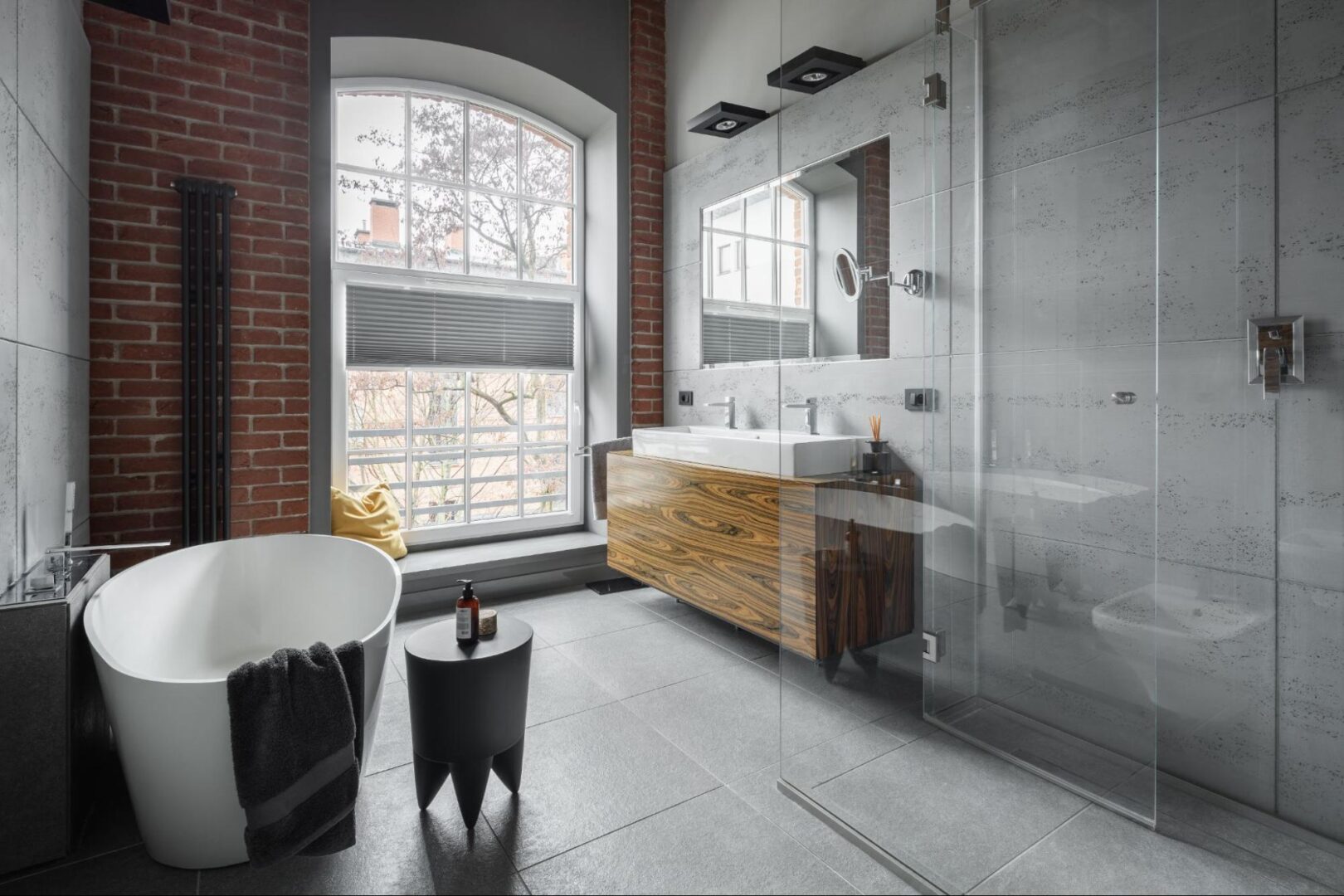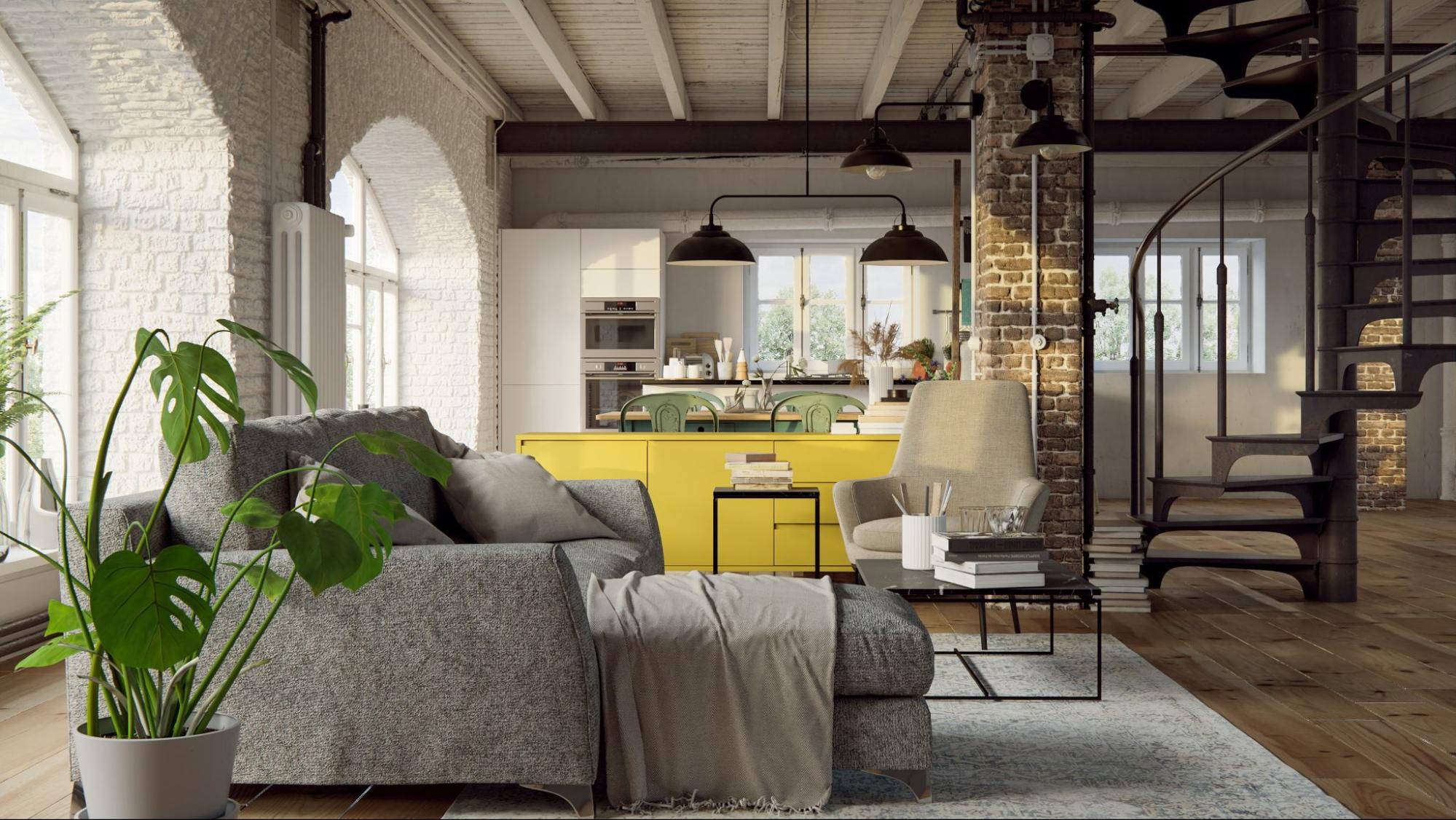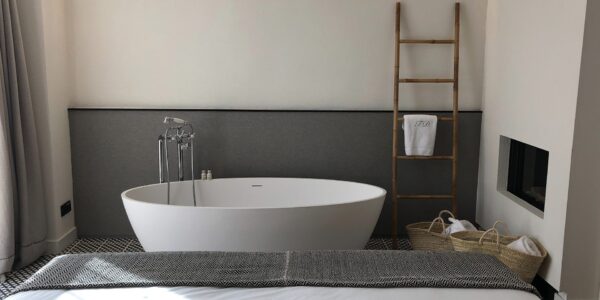Industrial home design has surged in popularity, captivating homeowners with its raw, urban aesthetic. This style, born from the repurposing of factories and warehouses, celebrates exposed brick, metal accents, and a minimalist approach to decor. But achieving a harmonious industrial look goes beyond just incorporating these elements—it’s about understanding the interplay of textures, colors, and lighting.
What is industrial interior design?
Industrial interior design draws inspiration from the raw and functional aesthetic of factories, warehouses, and other industrial spaces. It celebrates the beauty in utilitarian materials and structural elements, often leaving them exposed rather than concealed. Think exposed brick walls, metal piping, wooden beams, and concrete floors. This style embraces a sense of history and authenticity, reflecting the building’s past life.
If you’re passionate about decoration styles that emphasize structural honesty and material authenticity, industrial design naturally aligns with others such as Brutalist Architecture—a movement that also highlights concrete surfaces, minimalism, and a bold, utilitarian feel.
Characteristics of industrial interior design
To bring the essence of industrial style into your home, consider these defining characteristics:
- Raw and exposed structural elements: Embrace exposed brick walls, ductwork, pipes, and beams. These elements add character and tell the story of the building’s past.
- Neutral color palette: Opt for a base of grays, blacks, whites, and browns. These colors create a sense of sophistication and allow the textures and materials to take center stage.
- Robust and durable materials: Incorporate materials like metal, wood, concrete, and leather. These materials not only look the part but also age beautifully over time.
- Vintage and reclaimed pieces: Integrate vintage furniture, lighting, and accessories. Look for pieces with a history, patina, and unique character. Flea markets, antique shops, and online marketplaces are great places to source these treasures.
- Statement lighting: Lighting plays a crucial role in industrial interiors. Consider oversized pendant lights with metal finishes, factory-inspired sconces, or exposed bulb fixtures for a touch of industrial charm.
- Minimalist approach to decor: Avoid clutter and excessive ornamentation. Embrace a “less is more” philosophy, allowing the architectural elements and carefully curated furniture to shine.

Modern industrial interior design: color guide
While industrial design is known for its neutral palette, incorporating color strategically can add depth and personality to your space. Here’s a guide to using color in an industrial interior:
- Primary palette: Stick to a base of white, gray, black, and brown. These colors create a timeless backdrop and allow you to introduce pops of color more deliberately.
- Accent colors: Introduce pops of color through furniture, textiles, and artwork. Consider rich jewel tones like emerald green, sapphire blue, or ruby red to add a touch of luxury and contrast against the industrial backdrop.
Ideas for industrial home decor: modern touches
While staying true to the industrial aesthetic’s roots is essential, incorporating modern touches can elevate the look and prevent it from feeling dated. Here are some ideas for industrial decor:
- Mix and match furniture styles: Pair vintage industrial pieces with sleek, contemporary furniture for an eclectic and updated look.
- Geometric patterns: Introduce geometric patterns through rugs, throw pillows, or artwork. Geometric patterns add a sense of visual interest and modernity.
- Metallic accents: Incorporate metallic accents through lighting fixtures, furniture hardware, or decorative objects. Brass, copper, and gold add warmth and a touch of glamour.
- Open shelving: Utilize open shelving to display books, artwork, and decorative objects. Open shelving adds a modern touch while keeping the space feeling open and airy.
Industrial-style living room
Create a welcoming and stylish industrial-style living room by incorporating a leather sofa, metal coffee table, and exposed brick wall. Add warmth with a vintage rug and soft lighting.
A large, comfortable sectional in a neutral color like gray or brown can anchor the space, while metal accents in the coffee table, lighting fixtures, and decorative objects can enhance the industrial vibe.
Kitchen with an industrial style
Design an industrial kitchen with stainless steel appliances, open shelving, and concrete countertops. Consider a large island with metal stools for a functional and stylish centerpiece.
Open shelving allows you to display your favorite dishware and cookware, adding a personal touch to the space. Concrete countertops provide a durable and stylish work surface, while stainless steel appliances reinforce the industrial aesthetic.
Bathroom with industrial vibe
Achieve an industrial-style in your bathroom with a clawfoot tub, exposed pipes, and subway tile. Incorporate metal accents through lighting fixtures and hardware.
A freestanding clawfoot tub adds a touch of vintage charm, while exposed pipes and fixtures enhance the industrial feel.
Tips to achieve industrial style decor
- Start with a neutral base: Begin with a neutral color palette for walls, floors, and large furniture pieces. This creates a blank canvas to layer in industrial elements.
- Embrace imperfections: Industrial style celebrates imperfections. Don’t be afraid to showcase the building’s history through exposed brick, distressed wood, or weathered metal.
- Incorporate reclaimed materials: Use reclaimed wood for shelving, flooring, or furniture. Repurpose vintage industrial objects as decorative accents.
- Let there be light: Maximize natural light by keeping windows unobstructed. Incorporate a variety of light sources, including pendant lights, sconces, and table lamps, to create ambiance.
- Add personal touches: Inject your personality into the space through artwork, textiles, and personal objects. Don’t be afraid to mix and match different styles to create a space that reflects your unique taste.
Industrial-style architecture offers a captivating blend of history, functionality, and urban chic. By understanding its key elements and incorporating modern touches, you can create a space that is both stylish and inviting.

Related articles
Discover your new home with MiA
We have launched our virtual agent to help you find the property you are looking for.
Ask MiA and get personalized recommendations to find your dream home. Try it now!




